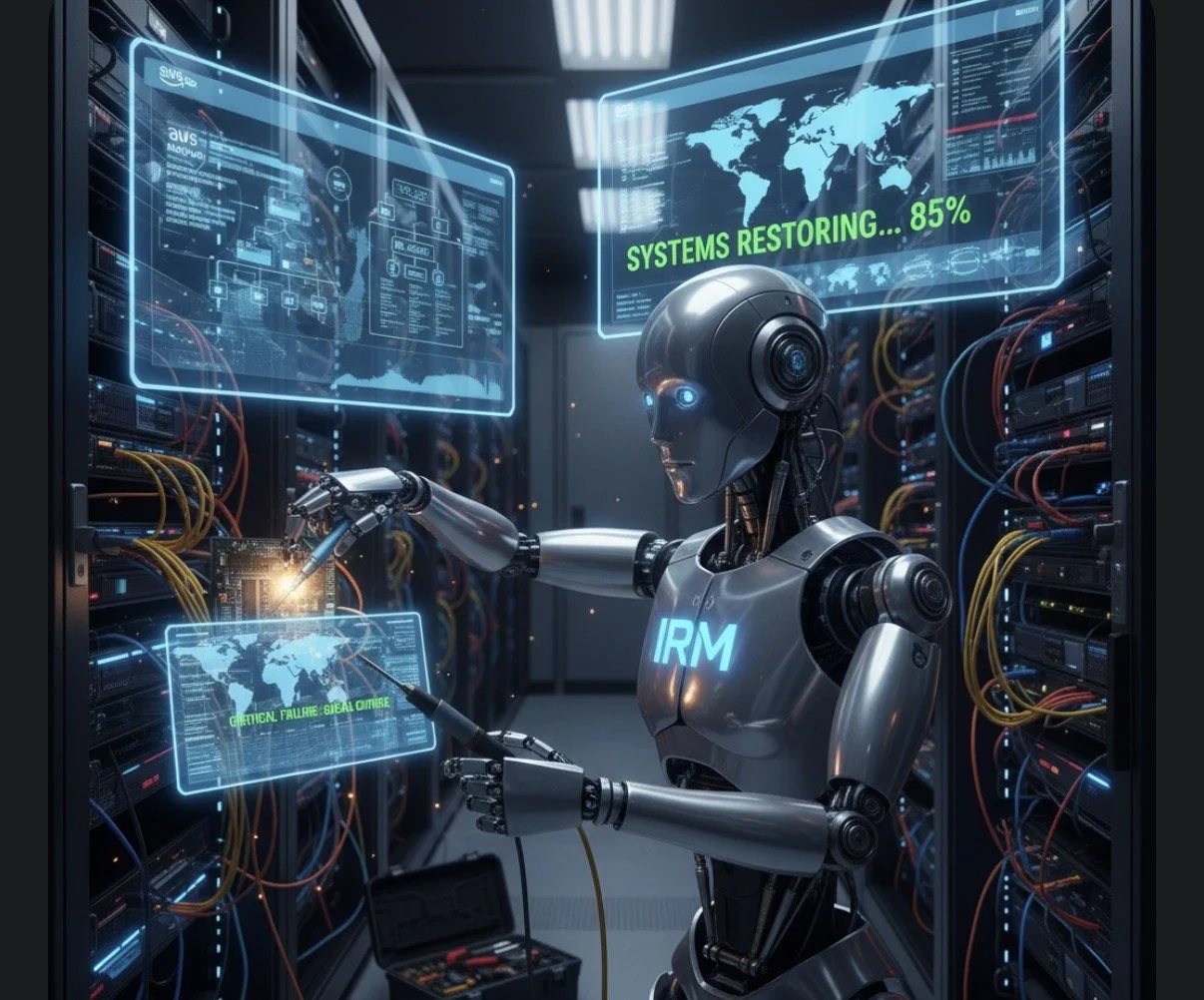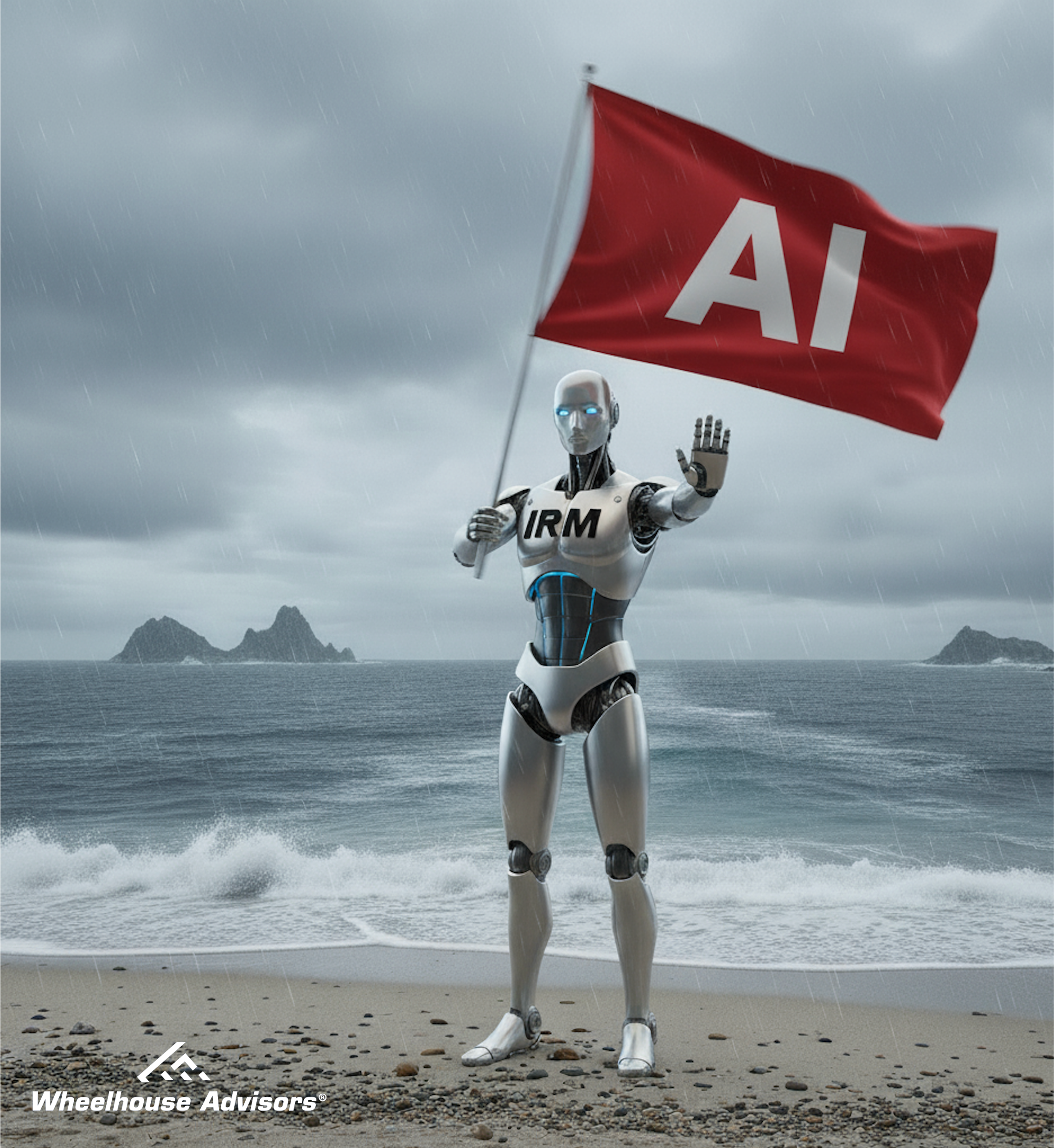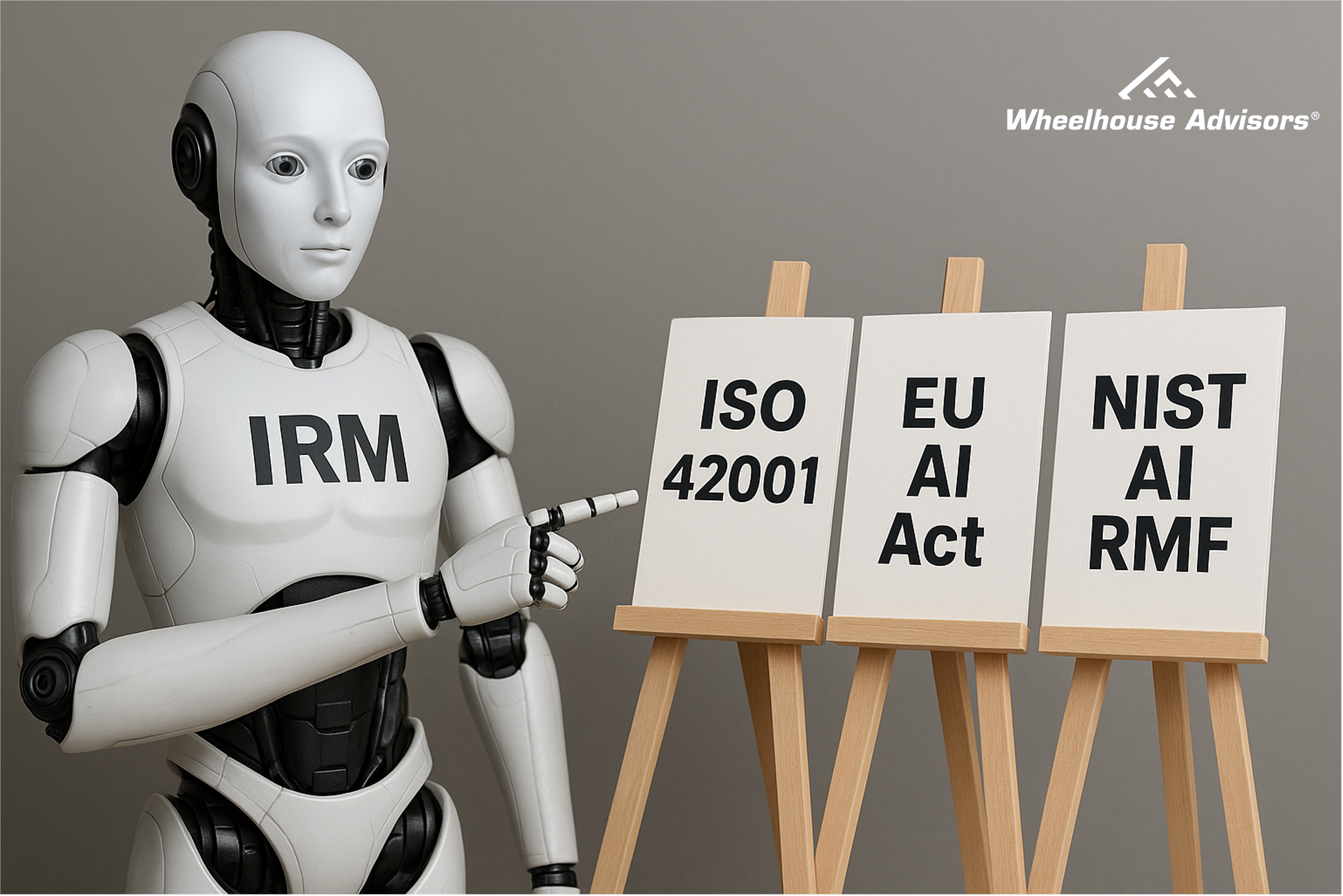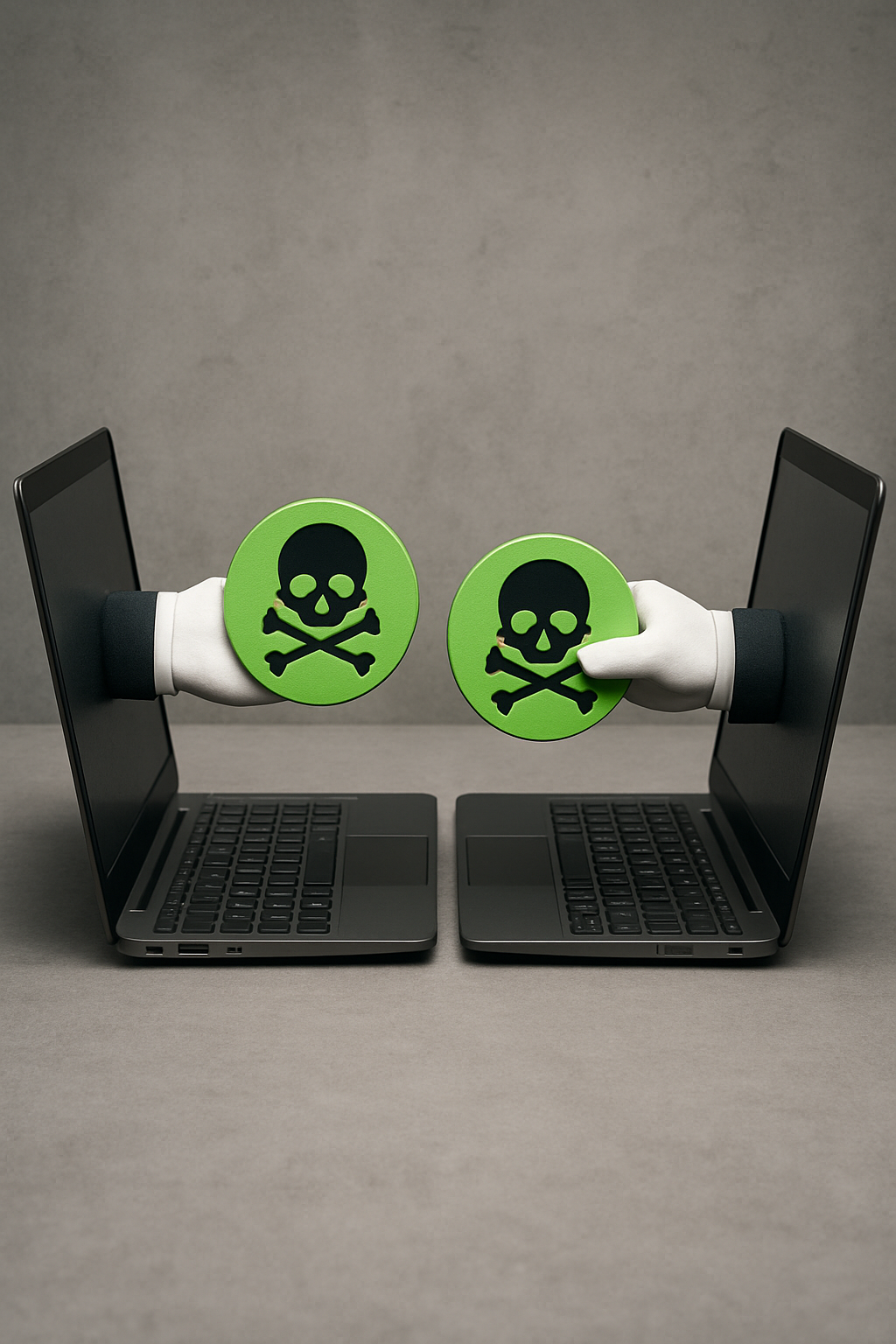
Click here to access subscription content at The RTJ Bridge - The Premium Version of The RiskTech Journal
〰️
Click here to access subscription content at The RTJ Bridge - The Premium Version of The RiskTech Journal 〰️
The RiskTech Journal
The RiskTech Journal is your premier source for insights on cutting-edge risk management technologies. We deliver expert analysis, industry trends, and practical solutions to help professionals stay ahead in an ever-changing risk landscape. Join us to explore the innovations shaping the future of risk management.

The IRM Navigator™ Curve: A Faster Way to Classify Vendors and Clarify Your Risk Technology Roadmap
Most organizations still evaluate risk technology using surface features or maturity labels that do not reveal where a solution truly fits in the broader risk ecosystem. The IRM Navigator™ Curve provides a more reliable assessment. It combines the five IRM maturity levels with the four underlying investment domains to show how organizations advance from Risk Dysfunction to Risk Agency. This article introduces the curve in plain terms and provides a quick test that allows buyers to slot any vendor on the curve in less than two minutes.

Why Data Streaming Is the Hidden Backbone of Autonomous IRM
Data streaming has become a foundational capability for modern enterprises. As organizations move away from periodic reporting and manual control cycles, the emphasis has shifted to continuous sensing, real time telemetry, and rapid mitigation. These operational patterns depend on data in motion, not data at rest. Streaming architectures now sit at the center of this shift.
The acquisition of Confluent announced today by IBM reinforces this point. Confluent is the leading commercial platform built on Apache Kafka, one of the most widely adopted streaming technologies worldwide. The acquisition signals that streaming has moved from a niche data engineering function to a strategic capability that enables AI operations, continuous controls, and integrated risk programs. Enterprises are recognizing that autonomous risk management depends on steady, reliable streams of operational signals that can be sensed, analyzed, and acted upon in real time.

GRC Without Visionaries: What the 2025 Gartner® Magic Quadrant™ Reveals About the Future of Risk
The release of the “2025 Gartner® Magic Quadrant™ for Governance, Risk and Compliance (GRC) Tools, Assurance Leaders” marks an important turning point in the evolution of enterprise risk technology. For the first time in nearly two decades of coverage, Gartner has explicitly defined the GRC category around assurance leaders rather than enterprise risk or governance audiences.
Equally significant is the visual structure of the 2025 quadrant, which contains an entirely empty Visionaries section. While some may interpret this as a sign of stagnation, it more accurately reflects a market that has entered its integration phase. The GRC segment has reached functional maturity and operational stability, creating the foundation upon which the next generation of Integrated Risk Management (IRM) and Autonomous IRM capabilities will develop.
Here, we analyze the implications of the 2025 Magic Quadrant through the lens of the IRM Navigator™ Model and the recent IRM Navigator™ Vendor Compass for Governance, Risk and Compliance (GRC) - 2025 Edition. Our research concludes that the absence of Visionaries does not indicate a failure of innovation, but rather the outcome of successful specialization. GRC has become the operational core of enterprise assurance, while IRM now defines the broader architecture of enterprise confidence and decision intelligence.

AWS Outage, What Happened And How To Prepare With Integrated Risk Management
On Monday, October 20, a fault in Amazon Web Services’ US-EAST-1 region disrupted Domain Name System (DNS) resolution for the Amazon DynamoDB regional endpoint. The failure propagated into other AWS subsystems that rely on that endpoint and produced widespread service degradation across many internet applications. AWS reported that services stabilized by late afternoon Pacific time, with some services clearing backlogs afterward. These facts are supported by AWS service updates and independent internet measurement reports.

The Real AI Test: How to Tell a Platform from a Chat Overlay
Most vendors now claim to have “AI platforms,” but many are just chat interfaces placed on top of disconnected systems. The difference is more than marketing. Without the right controls, these overlays can leak data, bypass policies, and mislead buyers into thinking they are getting enterprise-grade AI governance when they are not.

Petri and the Rise of Autonomous Risk Auditing
On October 6, 2025, Anthropic introduced Petri, the Parallel Exploration Tool for Risky Interactions, an open-source auditing agent that automatically probes large-language models to detect and score risky behaviors. The release, while modest in presentation, may prove pivotal in how enterprises manage risk across autonomous systems.
Petri represents the maturation of AI safety research into a tangible, operational capability that bridges technology risk, assurance, and governance. More importantly, it signals the emergence of autonomous auditing as a new functional layer within Integrated Risk Management (IRM).

October 6: The Day U.S. Data Security Rules Get Real
Today marks a turning point for every organization that handles large volumes of U.S. personal or government-related data. The Department of Justice’s Data Security Program (DSP), authorized under Executive Order 14117, officially moves from guidance to enforcement. Starting October 6, 2025, companies that share sensitive U.S. data with foreign partners must have a written compliance program in place or face potential penalties. The rule is designed to stop bulk transfers of Americans’ sensitive information to countries that the U.S. deems national security risks.

Executive Comparison of AI Governance Frameworks for Risk & Compliance
Artificial Intelligence (AI) is becoming integral to enterprise operations and risk management, including emerging Autonomous IRM (Integrated Risk Management) initiatives where AI agents autonomously assist in identifying and managing risks. Executives and boards need to ensure such AI deployments are trustworthy, compliant, and aligned with business objectives. Several frameworks have emerged to govern AI risk and compliance. Below is a comparison of three key frameworks – ISO/IEC 42001 (the new AI Management System standard), the EU AI Act (forthcoming European regulation), and the NIST AI Risk Management Framework (RMF) (a U.S. voluntary guideline) – focusing on what executives should understand, monitor, and prioritize in each.

When Tokens Turn Toxic: How the Salesforce Supply Chain Breach Exposed the SaaS Domino Effect
A coordinated campaign has exploited a popular integration between Salesloft, Drift, and Salesforce, resulting in unauthorized access across some of the world’s most trusted enterprises. Palo Alto Networks, Zscaler, Cloudflare, and Proofpoint have all confirmed impacts to their Salesforce environments, while Okta reported blocking the attack through network restrictions.

Palo Alto Networks CEO Warns of AI Agent Risks
On CNBC yesterday, Palo Alto Networks CEO Nikesh Arora issued one of the most direct warnings yet about the risks of enterprise AI agents. He noted that in the near future, “there’s gonna be more agents than humans running around trying to help you manage your enterprise.” If true, that represents not only an IT transformation, but a fundamental shift in the risk surface of every large organization.

Autonomous IRM, Investor Confidence, Cyberinsurance Risks, and Analyst Failures: Exclusive Insights from The RTJ Bridge
The landscape of risk management technology is undergoing rapid transformation, driven by advanced artificial intelligence, shifting investor priorities, and increasingly sophisticated cybersecurity threats. While many risk professionals rely on general market reports and commentary, actionable and forward-looking insights remain scarce. Subscribers to The RTJ Bridge, the premium insights platform from Wheelhouse Advisors, have early and exclusive access to proprietary analysis, data-driven recommendations, and strategic perspectives unmatched elsewhere.

How CrowdStrike’s Agentic AI Accelerates Autonomous IRM
CrowdStrike’s launch of Charlotte AI—its agentic AI architecture now embedded within the Falcon platform—marks a decisive shift in how risk is not only detected, but addressed. With its triad of capabilities (Agentic Detection Triage, Agentic Response, and Agentic Workflows), Charlotte introduces a new operating model: one where AI systems autonomously assess, act, and learn within predefined parameters.
The implication for Integrated Risk Management (IRM) is profound. These are not just smarter alerts or faster forensics. They are machine-initiated decisions with immediate governance, compliance, and operational consequences. And that demands a new framework—one that aligns autonomous action with enterprise risk oversight.

The GRC Blind Spot: What the SharePoint Cyberattack Reveals About Risk Management Vulnerabilities
This past weekend, Microsoft confirmed that attackers exploited a critical zero-day vulnerability in on-premises SharePoint servers—a breach that quickly escalated into a global cybersecurity incident. Governments, universities, energy providers, and private enterprises were affected. At least 85 servers were confirmed compromised within 48 hours, with analysts warning that tens of thousands remained at risk.

The IRM50 All-Stars Take the Field
Wheelhouse Advisors Releases 2025 Lineup on MLB's Biggest Stage
On the same day baseball's best step up to the plate at the 95th MLB All-Star Game in Atlanta, Wheelhouse Advisors has released its all-star roster: the 2025 IRM50.
And just like the Midsummer Classic, this announcement celebrates top-tier talent, position-specific excellence, and strategic versatility—only this time, the field is Integrated Risk Management (IRM), not Truist Park. Wheelhouse's IRM50 recognizes the 50 most influential technology and consulting providers driving the future of IRM. The timing isn't just symbolic—Wheelhouse Advisors is also headquartered in Atlanta, and this year's report marks the broadest, most globally representative IRM50 to date.

The Coming Wave: Why AI-Fueled Cyber Crime Demands a New Layer of Risk Management
In June 2024, a ransomware attack on Synnovis—an NHS diagnostics provider—led to thousands of canceled surgeries, long-term patient harm, and yet barely registered in the headlines. A year later, an attack on Marks & Spencer, which temporarily left Percy Pig sweets and Colin the Caterpillar cakes off supermarket shelves, wiped £600 million off the company’s market cap and triggered nationwide panic.
This juxtaposition, as Misha Glenny eloquently observes in his Financial Times Weekend article, reveals something uncomfortable about both society’s perception of cyber risk and our structural ability to respond to it. But it also points to a larger and more pressing reality: AI is about to turn every cyber threat vector into a force multiplier—and the defensive tools most organizations rely on are no longer fit for purpose.
As AI matures into autonomous, agentic forms, we’re not just dealing with more attacks—we’re dealing with smarter, faster, and more scalable ones. The solution isn’t just better cybersecurity. It’s Integrated Risk Management (IRM)—and it must evolve as rapidly as the threat landscape.

Where Autonomous IRM Begins—And Where It Must Go Next
The Quiet Rise of Autonomous IRM—From the Middle Out
Autonomous IRM is no longer theoretical. AI-powered platforms are starting to deliver tangible value: agentic systems that simulate attacker behavior, validate control effectiveness, and recommend mitigation actions—often autonomously.
The June 5 announcement from Tuskira, integrating directly with ServiceNow’s Vulnerability Response and SecOps modules, is a prime example. By embedding simulation-backed scoring and posture-aware mitigation into operational workflows, Tuskira is delivering intelligence in real time.
But there’s something missing: the announcement doesn’t mention Integrated Risk Management (IRM) at all.
That silence is a signal. Tuskira operates in what Wheelhouse Advisors defines as Layer 3: Intelligence & Validation—the middle of the risk architecture. And while this layer is where automation is gaining traction, it’s also where many organizations are managing in isolation, without input from either end of the enterprise risk stack.

Inside the Hack: Why Social Engineering Exposes the Limits of Cyber Defense and Demands Integrated Risk Management
The recent cyberattack on Marks & Spencer (M&S), perpetrated by the notorious hacking group Scattered Spider, vividly underscores the evolving sophistication of cyber threats—and the alarming vulnerability of even well-protected enterprises. Despite significant investments in cybersecurity defenses, M&S faces an estimated loss of up to £300 million in operating profits and a plunge of £600 million in market capitalization following the breach.
As detailed recently by the Financial Times, Scattered Spider’s methods illuminate a stark reality: technical cybersecurity solutions alone are not enough. The group’s expertise lies in a blend of digital deception and human manipulation, a practice known as social engineering. Unlike traditional cybercriminals reliant solely on technical exploits, Scattered Spider meticulously researches employee identities, simulates convincing interactions, and leverages human psychology to circumvent cyber defenses.

From Permit to Platform—How CTRL WRK Turns Lockout/Tagout into an Autonomous IRM Use Case
A high-risk, paper-bound safety workflow finds new life on the ServiceNow platform—signaling a broader shift toward AI-enabled operational risk intelligence.
What was once a clipboard-bound safety task has now become a signal of something larger: the acceleration of Autonomous Integrated Risk Management (Autonomous IRM) through purpose-built, domain-native micro-apps. On June 2, CTRL WRK—a GenAI-powered “Control of Work” (CoW) application focused on lockout/tagout (LOTO) permitting—launched on the ServiceNow Store. While its function is precise, the implications are far-reaching.
This is more than digitization. It’s the embodiment of a broader market shift: from static compliance toward dynamic, AI-enabled risk management embedded directly into operational workflows.

Generative AI Is Steering Banks Toward Autonomous IRM—But the Bridge Isn’t Finished Yet
When McKinsey & Company published “How generative AI can help banks manage risk and compliance” in March 2024, it put blue-chip credibility behind a growing consensus: large-language models and related GenAI tools will automate swaths of the three-lines-of-defense and up-end conventional governance, risk, and compliance (GRC) workflows. What McKinsey did not say—but unmistakably implied—is that the old compliance-first paradigm is now on borrowed time. The firm’s use-case catalogue—from virtual regulatory advisors to code-generating “risk bots”—maps neatly onto the early layers of Autonomous Integrated Risk Management (IRM): continuously sensing risk, generating controls, and feeding decision-grade insight back into the business.
Yet the report also reveals a tension. McKinsey still frames GenAI as a helper inside discrete risk silos, guarded by human-in-the-loop checkpoints. Autonomous IRM envisions something bolder: an AI-directed control fabric that dissolves those silos, embeds itself in front-line processes, and—over time—lets the machine take the first swing at routine risk decisions while humans govern the exceptions.

Beyond the Firewall - Why Integrated Risk Management Is the Missing Layer in Cyber Defense
The recent revelation that Marks & Spencer—one of Britain’s most iconic retailers—suffered a cyberattack that could cost it up to £300 million in annual operating profit is a reminder that no amount of cybersecurity spending can fully inoculate a company from human error. The attack, reportedly traced to a third-party vendor and facilitated by social engineering, underscores a hard truth: cybersecurity is necessary, but not sufficient.
Despite boosting its cyber investment by 75% and quadrupling its team over the past two years, M&S was not spared. Nor were other well-known retailers like Harrods and the Co-op grocery group. These incidents reflect a deeper problem in the digital defense playbook—one that requires a broader, integrated approach to risk.
